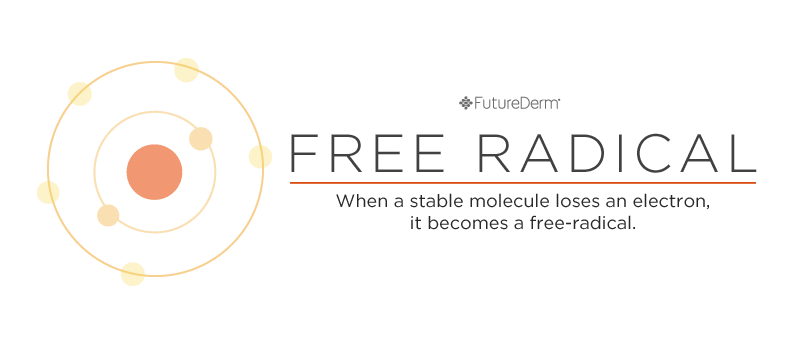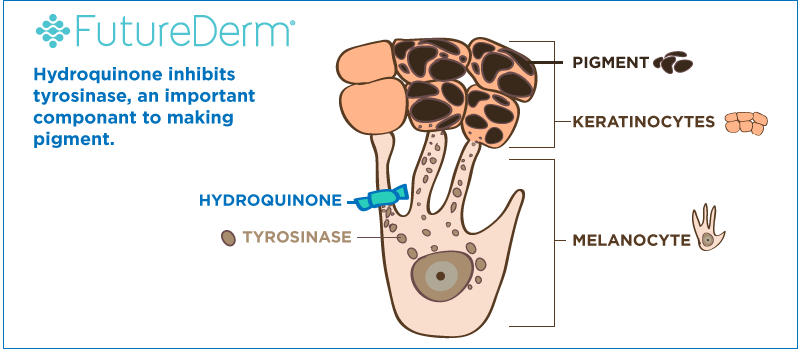Kojic acid and other natural treatments were things I often used to scoff at for treating age spots, skin dullness, melasma, and other signs of hyperpigmentation. Why bother with natural agents when you can get full potency from items like prescription retinoids, alpha hydroxy acids, and hydroquinone?
But the older I get, and the closer I get to planning to have my first child, the more I concentrate on words like “safety” and “toxicity.” With that said, I still scoff at most databases and “scientists” who claim that the chemicals in skin care and cosmetics are unsafe. Many chemicals that are reported in databases to present health concerns were used in exceptionally high concentrations in scientific studies as “extreme dose” cases, not in testing actual skin care products on human subjects. Some websites even report that chemical skin care ingredients, like parabens, build up in the skin over time, which has been found not to be the case. But I do understand concerns for safety, and how this can get so confusing.
Another issue with the entirely natural approach is that it presents a feeling of safety that is not necessarily founded. Take, for example, the all-natural ingredient chamomile, which is known to be soothing for the skin. Repeated exposure to chamomile has been known to induce a very irritating rash resulting from a ragweed allergy (The Prescription for Nutritional Healing). Many other “natural” ingredients, such as the arnica montana used to treat bruises, are also able to induce detrimental effects after repeated exposure. In fact, according to Dr. Leslie Baumann’s Cosmetic Dermatology, “Prolonged treatment of damaged skin [with arnica] often causes dermatitis with the formation of [acne] pustules; long-term use can also give rise to eczema.”
That said, there’s a delicate balance between natural and chemical ingredients. Here, I’ll talk about the best — and worst — natural and synthetic ingredients for hyperpigmentation.
The Best Natural Treatments for Hyperpigmentation
Kojic acid is naturally produced by different species of fungi, like mushrooms. Study after study demonstrates that kojic acid in concentrations of 1.0-2.5% a great treatment for hyperpigmentation (Baumann). Kojic acid has also been reported in several studies to have a higher efficacy than other natural agents, like arbutin, in lightening the skin.
Kojic acid works by limiting skin’s production of melanin, or skin pigment. Kojic acid suppress an enzyme necessary to produce melanin, but it works in a “non-traditional” fashion — not by killing pigment-producing cells like hydroquinone or preventing the transfer of pigment between cells.
Kojic acid is normally used twice a day for 1-2 months for the lightening of dark spots or the treatment of melasma.
Despite internet reports saying otherwise, kojic acid is largely safe for topical application to the skin, as in a skin care cream or serum. In fact, kojic acid is regularly put into foods like soy sauce, miso, sake, or strawberries to prevent discoloration (i.e., oxidation).
Reports that kojic acid is dangerous come from studies where kojic acid is directly injected into the bloodstream, where it can cause convulsions (Regulatory Toxicology and Pharmacology, 2001). However, this has never been shown in any studies to occur when kojic acid is topically applied to the skin. The only issue? Kojic acid can be sensitizing when used at 1.0-2.5% for several months (Dermatologic Surgery, 2001), so use it nightly for 2-3 months, then switch to another agent.
Vitamin C
Another great natural lightening agent is vitamin C. Typically recognized for being naturally present in citrus fruits, vitamin C is also naturally produced by animals like reptiles and birds to help combat free radical stress and to help produce key proteins (Wikipedia).
According to the International Journal of Pharmaceutics, vitamin C has many favorable aspects for the skin with regular topical application, including:
- scavenging of free radicals (reacts with the superoxide anion or the hydroxyl radical);
- suppressing pigmentation of the skin (by inhibiting the enzyme tyrosinase);
- decomposing melanin;
- triggering collagen production and thereby increasing skin firmness;
- enhancing sunscreen protection (see below).
According to a study in the British Journal of Dermatology, topical application of vitamin C has been shown to supplement depleted vitamin C levels after UV exposure for several hours. In addition, according to the study in the British Journal of Dermatology, topical application of vitamin C also protected skin from UVB-induced damage, as measured by erythema (redness) and sunburn.
There are different forms of vitamin C. Which to use depends on your skin type and concerns:
- L-ascorbic acid is the most common form of vitamin C used in skin care. The advantage to L-ascorbic acid is that its concentrations are well-established in skin care productsIt has been shown that topical application 10% L-ascorbic acid results in increased collagen production and skin retention of vitamin C for days after application. However, the disadvantage, as reported here in the journal Die Pharmazie, is that L-ascorbic acid changes upon exposure to light, heat, or air, becoming inactive. If you use products quickly, go with L-ascorbic acid.
- Ascorbyl palmitate is a fat-soluble ester of L-ascorbic acid. It is L-ascorbic acid combined with palmitic acid, a fatty acid. According to a 1997 study, ascorbyl palmitate is more stable than L-ascorbic acid.
- Sodium ascorbyl palmitate is arguably the most stable form of vitamin C. A water-soluble form of L-ascorbic acid. It is L-ascorbic acid combined with palmitic acid, a fatty acid, and – you’ll never guess – sodium.
 According to a 2001 study in theInternational Journal of Pharmaceutics, sodium ascorbyl palmitate has greater long-term stability than ascorbyl palmitate when each is used in similar concentrations.
According to a 2001 study in theInternational Journal of Pharmaceutics, sodium ascorbyl palmitate has greater long-term stability than ascorbyl palmitate when each is used in similar concentrations. - Magnesium ascorbyl palmitate is also a candidate for the most stable form of vitamin C. It is a water-soluble form of L-ascorbic acid. According to a 1997 study in the Journal of Pharmaceutical and Biomedical Analysis, magnesium ascorbyl palmitate has greater stability than both L-ascorbic acid and ascorbyl palmitate, like sodium ascorbyl palmitate.
- Ascorbyl glucoside. Ascorbyl glucoside has a structure in which the C2-hydroxyl group of L-ascorbic acid is masked with glucose. According to the manufacturer, Hayashibara International, once ascorbyl glucoside is selectively permeated through the skin, it is broken down into L-ascorbic acid and glucose by the enzyme alpha-glucosidase. Essentially, because ascorbyl glucoside is broken down into L-ascorbic acid, it has the same functions as L-ascorbic acid! In addition, ascorbyl glucoside has been found to have greater stability in the presence of air, heat, light, and pH changes than L-ascorbic acid.
- Ascorbyl glucosamine is L-ascorbic acid combined with (yes, this is obvious) glucosamine. Although the combination of N-acetyl glucosamine (NAG) and niacinamide was shown to reduce facial hyperpigmentation in two clinical studies. (Dermatology).
Personally, any of these vitamin C formulations are fine. I prefer L-ascorbic acid, but will use other forms to ensure long-term stability in products.
The Best Chemical Treatments
Hydroquinone
Hydroquinone is a great hyperpigmentation treatment. It is most effective in concentrations of at least 2-4%.
Hydroquinone works in several ways. The first is by inhibiting the activity of tyrosinase, an enzyme necessary for melanin production. The second is by inducing cell death in pigment-producing cells. This sounds super awful, but skin cells have an average life span of 21 days anyway.
Hydroquinone also has been reported to have antioxidant abilities as well.
Hydroquinone keeps getting a bad rap (and banned in the European Union) because it has been linked with ochronosis (skin darkening) in darker-skinned patients. However, according to a comprehensive review of 10000 patients by Dr. Jacob Levitt, the fears appear to be unfounded, particularly for those patients with lighter skin, as less than 1% of the patients were affected.
Prescription Treatments: Tretinoin, Fluocinolone, Hydroquinone
In general, several treatments have been established in independent scientific research studies to be effective against hyperpigmentation, including:
- 0.01% fluocinolone, 4% hydroquinone, and 0.05% tretinoin (prescription TriLuma)
- 4% hydroquinone (prescription).
- *2% kojic acid, 10% glycolic acid and 2% hydroquinone. All three ingredients are found in Peter Thomas Roth Ultra Gentle Skin Lightening Gel Complex, with 2% hydroquinone and unknown concentrations of kojic acid and glycolic acid.
Which to Choose: Natural or Synthetic?
The best hyperpigmentation regimen combines natural and synthetic ingredients, both in high concentration.
The key to the most powerful hyperpigmentation regimen involves cycling:
- 2-3 months of kojic acid and glycolic acid and vitamin C
- 2-3 months of prescription 4% hydroquinone or Tri-Luma (if not dark skinned) and vitamin C
- 2-3 months of kojic acid and glycolic acid and vitamin C
And the cycle repeats.
According to studies by Ellis and Garcia, kojic acid combined with glycolic acid is more effective than 10% glycolic acid or 4% hydroquinone alone for the treatment of hyperpigmentation.
However, kojic acid has been reported in at least one study to be irritating over time. So you can get the benefits of kojic acid without wearing out your skin by alternating kojic acid and AHA use with prescription hydroquinone/prescription retinoids, or a product like Ambi Fade Cream with hydroquinone and a retinoid.
Bottom Line
Not all natural treatments are safe, and neither are all chemical treatments.
For the best efficacy, cycle hyperpigmentation treatments. Use 2-3 months of 1.0-2.5% kojic acid and 10-15% glycolic acid, followed by 2-3 months of 2.0-4.0% hydroquinone and 0.5-1.0% retinol/0.025-0.100% tretinoin.
What are your thoughts on this post? Let me know in Comments!



